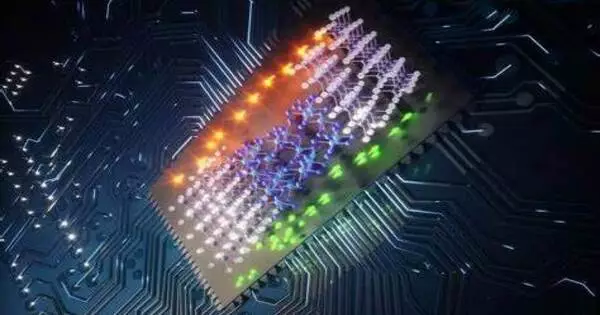The Max Planck Institute for the Structure and Dynamics of Matter (MPSD) in Hamburg, Germany, has demonstrated that a previously demonstrated ability to turn on superconductivity with a laser beam can be integrated on a chip, paving the way for optoelectronic applications.
Their findings, which have been published in Nature Communications, also show that the electrical response of photo-excited K3C60 is not linear, meaning that the resistance of the sample varies with the applied current. This is a key property of superconductivity, and it validates some previous observations while also providing new information and perspectives on the physics of K3C60 thin films.
The optical manipulation of materials to produce superconductivity at high temperatures is a key research focus of the MPSD. So far, this strategy has proven successful in several quantum materials, including cuprates, k-(ET)2-X, and K3C60. Enhanced electrical coherence and vanishing resistance have been observed in previous studies on the optically driven states in these materials.
This work underscores the scientific and technological developments within the MPSD in Hamburg, where new experimental methods are constantly being developed to achieve new scientific understanding.
Andrea Cavalleri
Cavalleri group researchers used on-chip non-linear THz spectroscopy in this study to open up the realm of picosecond transport measurements (a picosecond is a trillionth of a second). They used co-planar waveguides to connect thin films of K3C60 to photo-conductive switches. They sent a strong electrical current pulse lasting only one picosecond through the material after triggering the switch with a visible laser pulse. The current pulse reached another switch that served as a detector to reveal important information, such as the characteristic electrical signatures of superconductivity, after traveling through the solid at around half the speed of light.
The researchers were able to observe non-linear current changes in the optically excited material by simultaneously exposing the K3C60 films to mid-infrared light. The critical current behavior and the Meissner effect are the two most important properties of superconductors. Both, however, have yet to be measured, making this demonstration of critical current behavior in the excited solid all the more significant. Furthermore, the researchers discovered that the optically driven state of K3C60 resembled that of a granular superconductor, which is made up of weakly connected superconducting islands.

The MPSD is uniquely positioned to perform such measurements on the picosecond scale because the on-chip setup was designed and built in-house. “We created a technique platform that is ideal for probing non-linear transport phenomena away from equilibrium, such as the non-linear and anomalous Hall effects, the Andreev reflection, and others,” says lead author Eryin Wang, a Cavalleri group staff scientist. Furthermore, the incorporation of non-equilibrium superconductivity into optoelectronic platforms may result in the development of new devices based on this effect.
“This work underscores the scientific and technological developments within the MPSD in Hamburg, where new experimental methods are constantly being developed to achieve new scientific understanding,” says Andrea Cavalleri, who founded and currently leads the research group. We’ve been working on ultrafast electrical transport methods for nearly a decade, and we’re now in a position to study so many new phenomena in non-equilibrium materials, potentially bringing about long-term technological changes.”
















